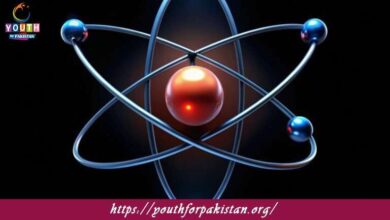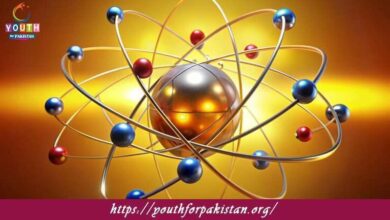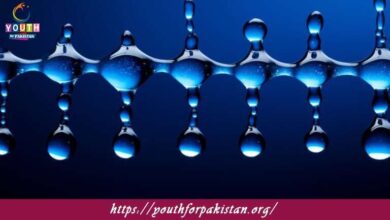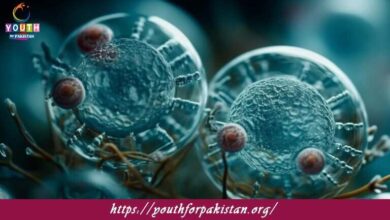9th Class Biology Chapter 2 MCQs with Answers
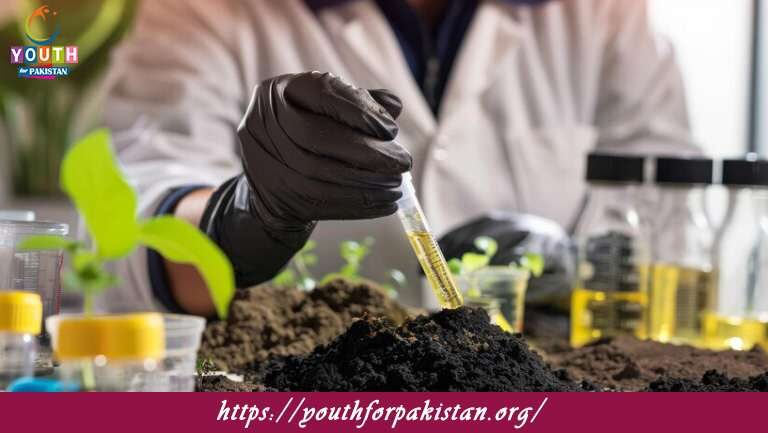
Here, explore the scientific procedure of problem-solving in “Solving a Biological Problem MCQs” for 9th-class biology. This course describes how biologists use the scientific method to investigate questions through hypothesis testing and data analysis. Practical applications have been emphasized in the following MCQs, enabling one to understand experimental design and just how observations are put to use in solving biological problems. Get going with these insight-providing questions!
Which of the following is the correct sequence of steps in the scientific method?
a) Hypothesis, observation, experimentation, conclusion
b) Observation, conclusion, hypothesis, experimentation
c) Experimentation, observation, hypothesis, conclusion
d) Conclusion, hypothesis, experimentation, observation
A scientist wants to study the effect of temperature on plant growth. Which variable is the independent variable in this experiment?
a) Plant growth
b) Temperature
c) Time
d) Light intensity
In an experiment, the group that serves as the standard for comparison is called the:
a) Control group
b) Experimental group
c) Independent group
d) Dependent group
Which of the following is the study of how traits are passed from parents to offspring?
a) Genetics
b) Ecology
c) Evolution
d) Taxonomy
Which type of biomolecule is an enzyme?
a) Protein
b) Carbohydrate
c) Lipid
d) Nucleic acid
Which of the following is the correct order of the stages in the cell cycle?
a) G1, G2, S, M
b) G2, G1, M, S
c) S, G1, G2, M
d) G1, S, G2, M
If a diploid organism has 12 chromosomes, how many chromosomes will be found in its haploid cells?
a) 6
b) 12
c) 24
d) 48
Which of the following is an example of an organ system in the human body?
a) Heart
b) Liver
c) Lungs
d) All of the above
Which of the following is a process that involves the uptake of large molecules into a cell by engulfing them with the cell membrane?
a) Osmosis
b) Diffusion
c) Endocytosis
d) Exocytosis
The process by which an mRNA molecule is synthesized from a DNA template is called:
a) Translation
b) Transcription
c) Replication
d) Reverse transcription
A plant cell placed in a hypertonic solution will:
a) Swell and burst
b) Shrink and plasmolyze
c) Remain unchanged
d) Divide into two cells
Which of the following is a process that produces two identical daughter cells with the same number of chromosomes as the parent cell?
a) Meiosis
b) Mitosis
c) Fertilization
d) Replication
Which of the following is an example of an abiotic factor in an ecosystem?
a) Predators
b) Temperature
c) Plants
d) Decomposers
The gradual change in the inherited traits of a population over time is known as:
a) Adaptation
b) Homeostasis
c) Evolution
d) Reproduction
A scientist wants to test the effect of different fertilizers on plant growth. Which of the following is an appropriate control variable for this experiment?
a) Type of fertilizer
b) Plant species
c) Amount of water given to each plant
d) Height of the plants at the end of the experiment
Which of the following is a technique used to analyze the DNA fingerprint of an individual?
a) Gel electrophoresis
b) Polymerase chain reaction (PCR)
c) Genetic engineering
d) Cloning
The process by which green plants convert light energy into chemical energy is known as:
a) Respiration
b) Photosynthesis
c) Digestion
d) Fermentation
Which of the following is the energy currency of the cell, often referred to as the
“molecular currency”?
a) ATP
b) DNA
c) RNA
d) NADH
In a DNA molecule, adenine (A) pairs with:
a) Guanine (G)
b) Thymine (T)
c) Cytosine (C)
d) Uracil (U)
Which of the following is a method used to identify and classify organisms based on their observable characteristics?
a) Ecology
b) Genetics
c) Taxonomy
d) Evolution
A population of rabbits has a high number of predators. Over time, the rabbits with better camouflage survive and reproduce more successfully. This is an example of:
a) Natural selection
b) Artificial selection
c) Genetic engineering
d) Mutation
The process by which water moves across a semipermeable membrane from an area of higher solute concentration to an area of lower solute concentration is called:
a) Osmosis
b) Diffusion
c) Active transport
d) Passive transport
The genetic makeup of an individual is referred to as their:
a) Phenotype
b) Genotype
c) Allele
d) Chromosome
Which of the following is the process by which an organism maintains a stable internal environment despite external fluctuations?
a) Reproduction
b) Adaptation
c) Homeostasis
d) Evolution
Which of the following is the process by which genetic information from DNA is used to build proteins?
a) Translation
b) Transcription
c) Replication
d) Translocation
Which of the following is a tool used to determine the DNA sequence of an individual’s
genome?
a) Gel electrophoresis
b) Polymerase chain reaction (PCR)
c) DNA sequencing
d) Genetic engineering
Which of the following is a method of genetic recombination that involves the exchange of genetic material between homologous chromosomes?
a) Mitosis
b) Meiosis
c) Translocation
d) Translation
The structure that carries out protein synthesis in the cell is the:
a) Nucleus
b) Ribosome
c) Endoplasmic reticulum
d) Mitochondria
Which of the following is the process by which a cell engulfs and internalizes substances by forming vesicles?
a) Endocytosis
b) Exocytosis
c) Osmosis
d) Diffusion
A population of deer has a wide range of fur colors, including brown, white, and black. Over time, the brown fur color becomes more prevalent in the population due to its better camouflage in the environment. This is an example of:
a) Natural selection
b) Artificial selection
c) Genetic engineering
d) Mutation
The process by which certain plants and bacteria convert nitrogen gas from the atmosphere into usable forms for living organisms is known as:
a) Photosynthesis
b) Transpiration
c) Nitrogen fixation
d) Nitrogen cycling
Which of the following is a specialized region on a chromosome that holds the two chromatids together until they separate during cell division?
a) Centromere
b) Telomere
c) Nucleosome
d) Homologous region
Which of the following is a genetic disorder caused by the presence of an extra copy of chromosome 21?
a) Down syndrome
b) Hemophilia
c) Cystic fibrosis
d) Turner syndrome
The process by which an organism changes over time to better suit its environment is known as:
a) Homeostasis
b) Reproduction
c) Evolution
d) Metabolism
Which of the following is an example of an organ in the human body?
a) Heart
b) Cell
c) Tissue
d) Nerve
Which of the following is an example of a heterotrophic organism?
a) Plant
b) Fungus
c) Algae
d) Cyanobacterium
A scientist wants to investigate the effect of different pH levels on the enzyme activity of amylase. Which variable is the dependent variable in this experiment?
a) pH levels
b) Enzyme activity
c) Time
d) Temperature
Which of the following is an example of asexual reproduction in plants?
a) Pollination
b) Fertilization
c) Budding
d) Seed formation
The process of breaking down food into smaller molecules that can be absorbed by the body is known as:
a) Respiration
b) Excretion
c) Digestion
d) Circulation
A researcher wants to investigate the effects of different temperatures on the rate of enzyme activity. Which of the following is a suitable control group for this experiment?
a) The group of enzymes tested at different temperatures
b) The group of enzymes tested at one specific temperature
c) The group of enzymes tested with different concentrations
d) The group of enzymes tested without any substrate
A scientist is studying the inheritance of flower color in a plant species. The flower color trait is controlled by a single gene with two alleles, red (R) and white (r). What is the expected genotype ratio of the offspring if a heterozygous (Rr) plant is crossed with a homozygous recessive (rr) plant?
a) 1 RR: 1 Rr
b) 1 RR: 2 Rr
c) 2 Rr: 1 rr
d) 1 Rr: 1 rr
Which of the following is the process by which cells divide and multiply to form new cells?
a) Meiosis
b) Mitosis
c) Fertilization
d) Reproduction
In an ecosystem, what is the ultimate source of energy for most organisms?
a) Sunlight
b) Water
c) Soil
d) Air
The process by which water moves from a region of higher water concentration to a region of lower water concentration through a semipermeable membrane is called:
a) Diffusion
b) Osmosis
c) Active transport
d) Filtration
Which of the following is a process that converts atmospheric nitrogen into a form that plants can use?
a) Nitrogen fixation
b) Nitrification
c) Denitrification
d) Ammonification
A researcher wants to investigate the effect of different light intensities on the growth of plants. Which variable is the independent variable in this experiment?
a) Light intensity
b) Growth of plants
c) Temperature
d) Humidity
Which of the following is the process by which new individuals are produced from a single parent without the involvement of gametes?
a) Meiosis
b) Mitosis
c) Sexual reproduction
d) Asexual reproduction
The process by which cells use oxygen to break down glucose and release energy is known as:
a) Photosynthesis
b) Respiration
c) Digestion
d) Fermentation
The genetic information in DNA is stored in the sequence of its:
a) Nucleotides
b) Proteins
c) Carbohydrates
d) Lipids
Which of the following is the process by which RNA molecules are synthesized from DNA
templates?
a) Translation
b) Transcription
c) Replication
d) Reverse transcription
A scientist wants to investigate the effect of different concentrations of a drug on bacterial growth. Which variable is the dependent variable in this experiment?
a) Drug concentration
b) Bacterial growth
c) Temperature
d) Time
In a DNA molecule, cytosine (C) pairs with:
a) Guanine (G)
b) Thymine (T)
c) Adenine (A)
d) Uracil (U)
The process by which the genetic information in a cell’s DNA is copied to produce an
mRNA molecule is called:
a) Transcription
b) Translation
c) Replication
d) Translocation
Which of the following is a technique used to amplify a specific segment of DNA in the laboratory?
a) Gel electrophoresis
b) Polymerase chain reaction (PCR)
c) Genetic engineering
d) Cloning
The process by which genetic information is exchanged between homologous chromosomes during meiosis is called:
a) Crossing over
b) Segregation
c) Translocation
d) Translation
Which of the following is a specialized region at the end of a chromosome that protects it from deterioration or from fusion with neighboring chromosomes?
a) Centromere
b) Telomere
c) Nucleosome
d) Homologous region
Which of the following is a genetic disorder caused by the absence of one X chromosome in females, leading to physical and developmental abnormalities?
a) Down syndrome
b) Hemophilia
c) Turner syndrome
d) Klinefelter syndrome
The process by which individuals with certain advantageous traits are more likely to survive and reproduce is known as:
a) Adaptation
b) Natural selection
c) Homeostasis
d) Evolution
The specific location of a gene on a chromosome is called its:
a) Genotype
b) Phenotype
c) Locus
d) Allele
Which of the following is a process used by plants to produce energy in the absence of oxygen?
a) Photosynthesis
b) Respiration
c) Digestion
d) Fermentation
If you are interested to enhance your knowledge regarding Physics, Chemistry, Biology, and Computer please click on the link of each category, you will be redirected to dedicated website for each category.


